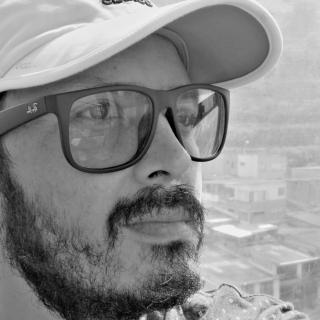
Women in Science Day: Five Outstanding Latinas
On the International Women and Girls in Science Day, here are five Latin American women whose achievements have been immeasurable.
International Women and Girls in Science Day, celebrated every Feb. 11, was declared by the United Nations General Assembly as part of a strategy to promote participation and gender equality in science.
Science has no gender!
— United Nations (@UN) February 11, 2022
We need to support girls & empower more #WomenInScience to address global challenges & create a better future for all.
Friday is the International Day of Women & Girls in Science. https://t.co/aNVKFKOJDh via @UNESCO pic.twitter.com/BL8Yx5qeoA
“Both science and gender equality are vital for sustainable development. However, women and girls continue to be excluded from fully participating in science: less than 30% of researchers worldwide are women," read a UNESCO statement in which it stressed the importance of the date, and the need to continue opening doors to women in the different fields of scientific research.
UNESCO did not let the day pass without remembering that "women and girls play a fundamental role in scientific and technological communities," which is why it invites them to bolster their participation. “Let's defy stereotypes! Let's take advantage of diversity! Let's overcome the limits of innovation!,” are some of the messages of the organization spread to commemorate this day.
Let us challenge stereotypes!
— UNESCO #Education #Sciences #Culture (@UNESCO) February 11, 2022
Let us benefit from diversity!
Let us push the boundaries of innovation!
Today is International Day of Women and Girls in Science!
https://t.co/jcAHtjI4XZ #WomenInScience pic.twitter.com/KTuqW60GOt
Although they are far from being a majority, Latinas are a clear example of women's tenacity and courage beyond their immense intellectual capacities, that they must have to participate without suspicion or discrimination in areas historically controlled by men. Here are five women who embody that and much more.
María Elena Bottazzi
Co-director of the Texas Children's Hospital Center for Vaccine Development, this Honduran designed Corbevax, a new COVID vaccine that, unlike its predecessors, was launched with a free patent, meaning it can be produced anywhere in the world and at a low cost. It's a key alternative that could grant much wider vaccine access to countries often overlooked on the global vaccination scale.
Saludamos este #11Febrero en el #DiaInternacionalMujerYNinaEnLaCiencia a todas las mujeres y niñas dedicadas a la ciencia #STEM y en especial a @mebottazzi una Hondureña que ha llevado el nombre de #Honduras a los @NobelPrize #ComiteDeGeneroCohep pic.twitter.com/UeazDerWXj
— COHEP (@COHEPHonduras) February 11, 2022
You can also read: New COVID vaccine could be key to getting the rest of the world vaccinated
Thanks to this latest achievement, Bottazzi was recently been nominated for the Nobel Peace Prize.
Karen Hallberg
This Argentine doctor of physics was awarded the L'Oreal-UNESCO international award for Women in Science in 2019, thanks to her development of computational techniques to understand the physics of quantum matter.
La física argentina, Karen Hallberg, dialogará con Silvina Chediek en Cada Noche | Hoy a las 23 h por la @TV_Publica. pic.twitter.com/kVYh0E5pYM
— Hernán Lombardi (@herlombardi) June 12, 2019
Hallberg is a principal investigator at the National Council for Scientific and Technical Research — CONICET is its acronym in Spanish. She is the author of more than 80 scientific articles in specialized international journals, editor of a book and has been invited to more than 50 international scientific congresses.
RELATED CONTENT
Sandra Díaz
She was part of the Intergovernmental Panel on Climate Change (IPCC), and awarded with the Nobel Peace Prize in 2007. She studies the impact of climate change on the regional biodiversity of plant ecosystems.
“Este modelo de producción y consumo pretende desafiar las leyes de la física y la biología”.
— Gabriela Cerruti (@gabicerru) January 27, 2021
Sandra Díaz es una eminencia mundial, la bióloga más citada en papers internacionales. Es argentina, de la Universidad de Córdoba y advierte sobre la crisis del tapiz de la vida. pic.twitter.com/NlemBZrCR2
Díaz is the only Argentine scientist who is a member of the French Academy of Sciences. According to UNESCO data from 2019, Argentina is one of the countries in the region with the highest percentage of women scientists, with more than 50 dedicated to research and experimental development.
Julieta Fierro Gossman
This Mexican astrophysicist is internationally recognized, and the author of at least 40 books and dozens of publications. She is also a senior researcher at the UNAM Institute of Astronomy and a professor on the Faculty of Sciences.
— Julieta Fierro Gossman (@FierroGossman) January 25, 2022
Grossman is also the winner of the Kalinga prize from UNESCO, and several laboratories, astronomical societies and schools are named after her.
Blanca Huertas
This Colombian, born in Bogotá, is known as “Madame Butterfly” or “Dr. Butterfly,” thanks to her work for more than 15 years at the Natural History Museum in London.
Happy @WomenScienceDay and Feliz #DiaDeLaMujerYLaNinaEnCiencia to all colleagues, y colegas. Let's enjoy every day challenges, las dificultades y los retos (on my very first 2min break today..).. #unminutodedescanso pic.twitter.com/Fo8lK6YjXP
— Blanca Huertas (@DrButterflyH) February 11, 2022
She currently serves as the senior curator of the world's oldest and largest collection of butterflies. One of her greatest discoveries was detailed in the publication: “One Hundred Years of Solitude: The Rediscovery of Catastica lycurgus,” about a yellow butterfly from the Sierra Nevada de Santa Marta that was seen for the first time in 1800.
In addition to personal and professional growth, these women us their work to inspire more members of their gender to want to chase their dreams in science.
Despite the difficulties to develop professionally in these fields, these women who dedicate their lives to the development of scientific practices are inspirations for girls across Latin America, who will stand out in the different fields in the coming decades.











LEAVE A COMMENT: